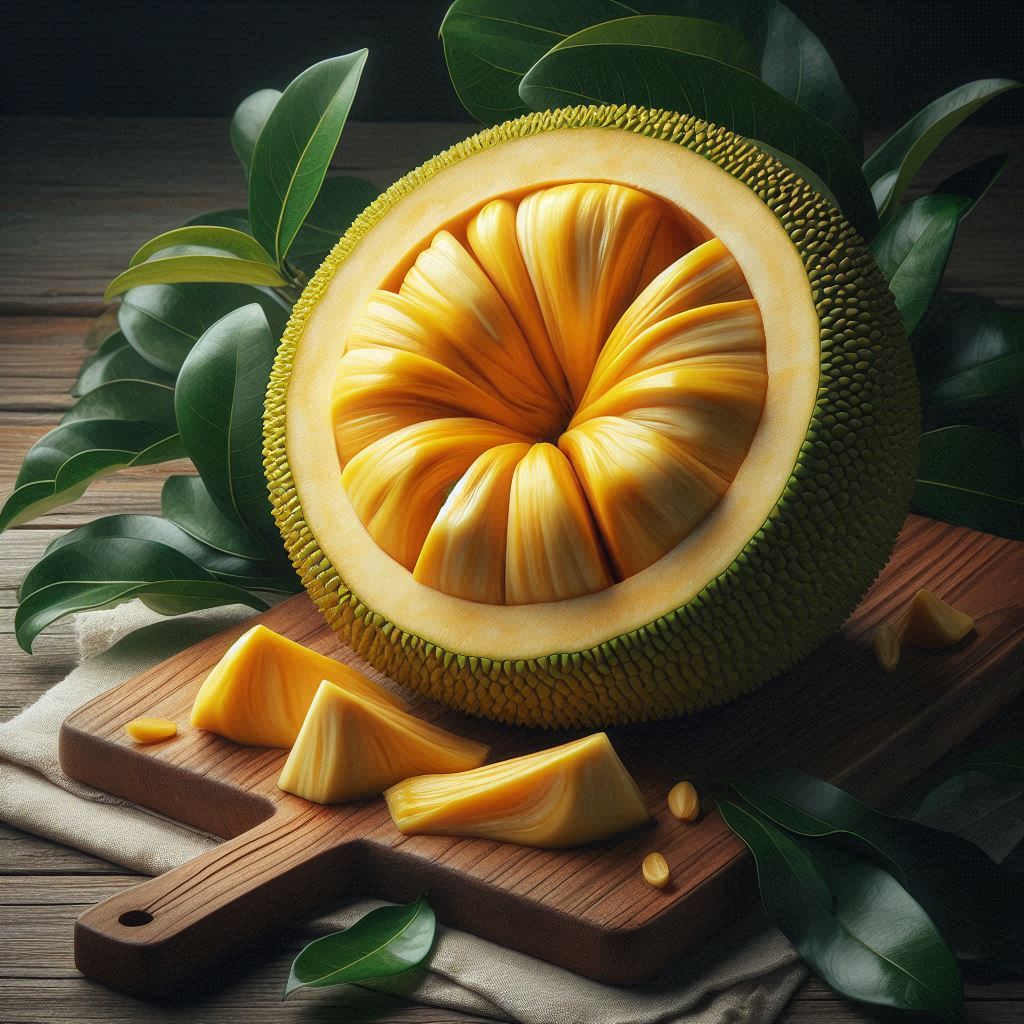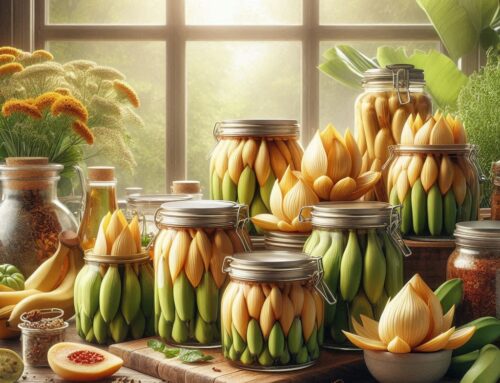
Understanding the Ripening Process of Jackfruit
The ripening process of jackfruit is a fascinating journey that transforms this tropical fruit from a hard, inedible mass into a sweet and aromatic delight. Understanding how jackfruit ripens involves recognizing the distinct stages of its maturation, each marked by notable changes in texture, color, and aroma.
Initially, the jackfruit starts off as green and firm. During this early stage of jackfruit maturation, the fruit is not yet suitable for consumption due to its tough exterior and lack of sweetness. As it progresses through its ripening stages, the outer skin begins to change color from green to a more yellowish hue. This transition indicates that the internal sugars are developing, which contributes to the characteristic sweetness associated with ripe jackfruit.
As you delve deeper into how jackfruit ripens, you’ll notice that the flesh inside becomes softer and more fragrant. The emergence of a strong fruity aroma is one of the key indicators that the fruit has reached an optimal level of ripeness. At this point in its maturation process, the pulp can be easily separated from its fibrous core and enjoyed either fresh or cooked.
Recognizing these stages of jackfruit ripeness not only enhances your appreciation for this unique fruit but also ensures you enjoy it at its peak flavor profile. Whether you’re harvesting from your garden or selecting one at the market, understanding these signs will help you make informed choices about when to indulge in this exotic treat.
Why Ripen Jackfruit After Cutting?
Ripening jackfruit after cutting is a practice that enhances both its flavor and nutritional profile, making it a preferred choice for many culinary enthusiasts. The importance of ripe jackfruit lies in its transformation from a starchy, somewhat bland fruit to a sweet, aromatic delight. When jackfruit ripens post-cutting, the natural sugars develop more fully, significantly enhancing its flavor profile and making it more palatable for consumption in various dishes.
One of the key benefits of ripe jackfruit is the increased availability of nutrients. As the fruit ripens, there is an improvement in nutrient bioavailability, meaning that our bodies can absorb and utilize these nutrients more effectively. Ripe jackfruit is rich in vitamins such as vitamin C and A, as well as minerals like potassium and magnesium. These nutrients play essential roles in maintaining good health by supporting immune function, promoting skin health, and regulating blood pressure.
Moreover, allowing jackfruit to ripen after cutting can also aid digestion. The natural softening process breaks down complex fibers into simpler forms that are easier for our digestive systems to handle. This not only makes ripe jackfruit easier to digest but also helps prevent potential gastrointestinal discomfort associated with consuming unripe fruit.
In summary, ripening jackfruit after cutting not only enhances its delightful sweetness but also maximizes its nutritional benefits. Whether enjoyed fresh or incorporated into recipes like curries or desserts, ripe jackfruit offers both taste satisfaction and health advantages that make it worth the wait.
Step-by-Step Guide to Ripening Cut Jackfruit at Home
Ripening cut jackfruit at home can be a straightforward process if you follow the right steps. Whether you’re looking to enjoy this tropical fruit at its sweetest or need it for a recipe, here’s how you can effectively ripen cut jackfruit using some simple home ripening methods.
- Choose the Right Environment: To begin with, place your cut jackfruit in a warm area of your home. A temperature range of 75-85°F is ideal for promoting faster ripening. Avoid placing it in direct sunlight as this might dry out the fruit rather than help it mature.
- Use Ethylene Gas: Like many fruits, jackfruit emits ethylene gas, which aids in ripening. To speed up fruit maturation, store your cut pieces in a paper bag along with an apple or banana—these fruits emit ethylene and will help accelerate the process.
- Monitor Moisture Levels: Ensure that the cut surfaces are not exposed to excess moisture as this could lead to spoilage before ripening is complete. Wrapping them loosely with plastic wrap can protect them while still allowing some airflow.
- Check Regularly: Keep an eye on your jackfruit daily to monitor its progress and prevent overripeness. The flesh should become softer and more fragrant when it’s ready to eat.
- Refrigerate Once Ripe: Once your jackfruit reaches the desired level of sweetness and texture, store it in the refrigerator if you’re not planning on consuming it immediately; this helps preserve its flavor for a few more days.
By following these DIY fruit ripening tips, you’ll be able to enjoy perfectly ripe jackfruit straight from your kitchen without any hassle!
Naturally Speeding Up the Ripening Process: Effective Methods and Techniques
Ripening fruit naturally can be both an art and a science, but with the right techniques, you can enjoy perfectly ripe produce without relying on artificial methods. One of the most effective natural fruit ripeners is ethylene gas, a natural plant hormone that promotes the ripening process. Certain fruits, like apples and bananas, are excellent sources of this gas and can be used to speed up ripening in other fruits.
The banana method for faster ripening is a popular technique due to its simplicity and effectiveness. By placing unripe fruit in close proximity to bananas, which emit high levels of ethylene gas as they mature, you can accelerate the ripening process of other fruits such as avocados or tomatoes.
Another tried-and-true approach is the paper bag technique for fruits. This method involves placing your unripe fruit in a paper bag with an ethylene-producing companion like an apple or banana. The bag traps the ethylene gas emitted by these fruits, creating a concentrated environment that hastens ripening. Unlike plastic bags, paper allows some moisture to escape while still keeping enough gas around to do its job efficiently.
By understanding and utilizing these natural methods—whether through strategic use of ethylene-rich companions or simple household items—you can ensure your fruit reaches peak flavor and texture just when you need it.
Common Mistakes to Avoid When Ripening Cut Jackfruit
When it comes to ripening cut jackfruit, there are several common mistakes that can hinder the process and affect the fruit’s quality. One frequent error is improper storage. Jackfruit storage errors, such as leaving the cut pieces exposed to air, can lead to oxidation and spoilage. It’s crucial to store cut jackfruit in an airtight container or wrap it tightly in plastic wrap before refrigerating.
Another mistake is improper handling of cut jackfruits. Rough handling can bruise the fruit, leading to uneven ripening and a compromised texture. Always handle with care and use a clean knife when cutting into the fruit.
Lastly, one of the key don’ts in fruit preparation for ripeness is neglecting temperature control. Jackfruit should be kept at room temperature until it reaches your desired level of ripeness before moving it to cooler storage conditions. By avoiding these common mistakes, you can ensure that your cut jackfruit ripens perfectly for consumption.
How to Store Ripe Jackfruit Properly to Maintain Freshness and Flavor
Storing ripe jackfruit properly is essential to maintain its freshness and flavor, especially after cutting. Here are some effective tips for ensuring your jackfruit remains delicious for as long as possible.
Firstly, if you have a whole ripe jackfruit, it can be stored at room temperature for a day or two. However, once cut, it’s crucial to refrigerate the fruit immediately. To prolong freshness in fruits storage after cutting, wrap the jackfruit pieces tightly in plastic wrap or place them in an airtight container. This prevents exposure to air and moisture that can accelerate spoilage.
Additionally, storing ripe jackfruits tips include ensuring that the refrigerator is set at an optimal temperature of around 40°F (4°C). This helps slow down the ripening process and keeps the fruit fresh longer. For those who wish to store jackfruit for an extended period, freezing is a viable option. Simply portion out the fruit into freezer bags or containers and ensure they are sealed well before placing them in the freezer.
By following these guidelines on storing ripe jackfruits properly, you can enjoy this tropical delight while preserving its natural sweetness and texture.
The Health Benefits of Ripe vs. Unripe Jackfruits: What You Need to Know?
When it comes to jackfruits, the stage of ripeness can significantly influence their nutritional profile and health benefits. Understanding the differences between ripe and unripe jackfruits can help you make informed dietary choices.
Ripe jackfruits are known for their sweet flavor and vibrant yellow color. They are rich in natural sugars, providing a quick energy boost. Additionally, ripe jackfruits contain higher levels of antioxidants like carotenoids and flavonoids, which help combat oxidative stress in the body. These antioxidants contribute to improved heart health and may reduce the risk of chronic diseases.
On the other hand, unripe jackfruits have a more subtle taste and are often used as a meat substitute due to their fibrous texture. While they contain less sugar than their ripe counterparts, they offer a good source of dietary fiber, which aids digestion and promotes satiety. Unripe jackfruits also provide essential vitamins such as vitamin C and B-complex vitamins that support immune function and energy metabolism.
The nutrition comparison between ripe and unripe fruits highlights that both stages have unique advantages. Consuming mature fruits like ripe jackfruit can enhance your intake of beneficial antioxidants while enjoying unripe varieties can support digestive health with increased fiber content.
Incorporating both ripe and unripe jackfruit into your diet allows you to enjoy a diverse range of nutrients that cater to different health needs. Whether you’re seeking an energy boost or looking for ways to improve digestion, understanding these distinctions empowers you to make choices that align with your wellness goals.
Conclusion: Enjoy Your Perfectly Ripe Jackfruit with These Simple Tips!
As we wrap up our exploration of the delightful world of jackfruit, it’s clear that enjoying this tropical treasure at its peak ripeness is both an art and a science. By following a few simple tips, you can ensure that every bite is a sweet and satisfying experience.
First, remember to look for visual cues such as a change in color from green to yellowish-brown and the presence of small brown spots on the skin. These are indicators that your jackfruit is ready to be savored. Additionally, don’t forget the importance of touch—ripe jackfruit should yield slightly under pressure but not feel too soft or mushy.
Scent also plays a crucial role; a ripe jackfruit will emit a sweet, fruity aroma that beckons you to dig in. Once you’ve confirmed these signs of ripeness, handling and preparing your jackfruit becomes much easier. With these insights at your fingertips, you’re now equipped to enjoy this exotic fruit in all its glory.
Whether you’re indulging in its fresh form or incorporating it into delicious recipes, perfectly ripe jackfruit promises an unparalleled taste experience that’s well worth the effort. So go ahead—embrace these tips and make the most out of your next encounter with this versatile fruit!






